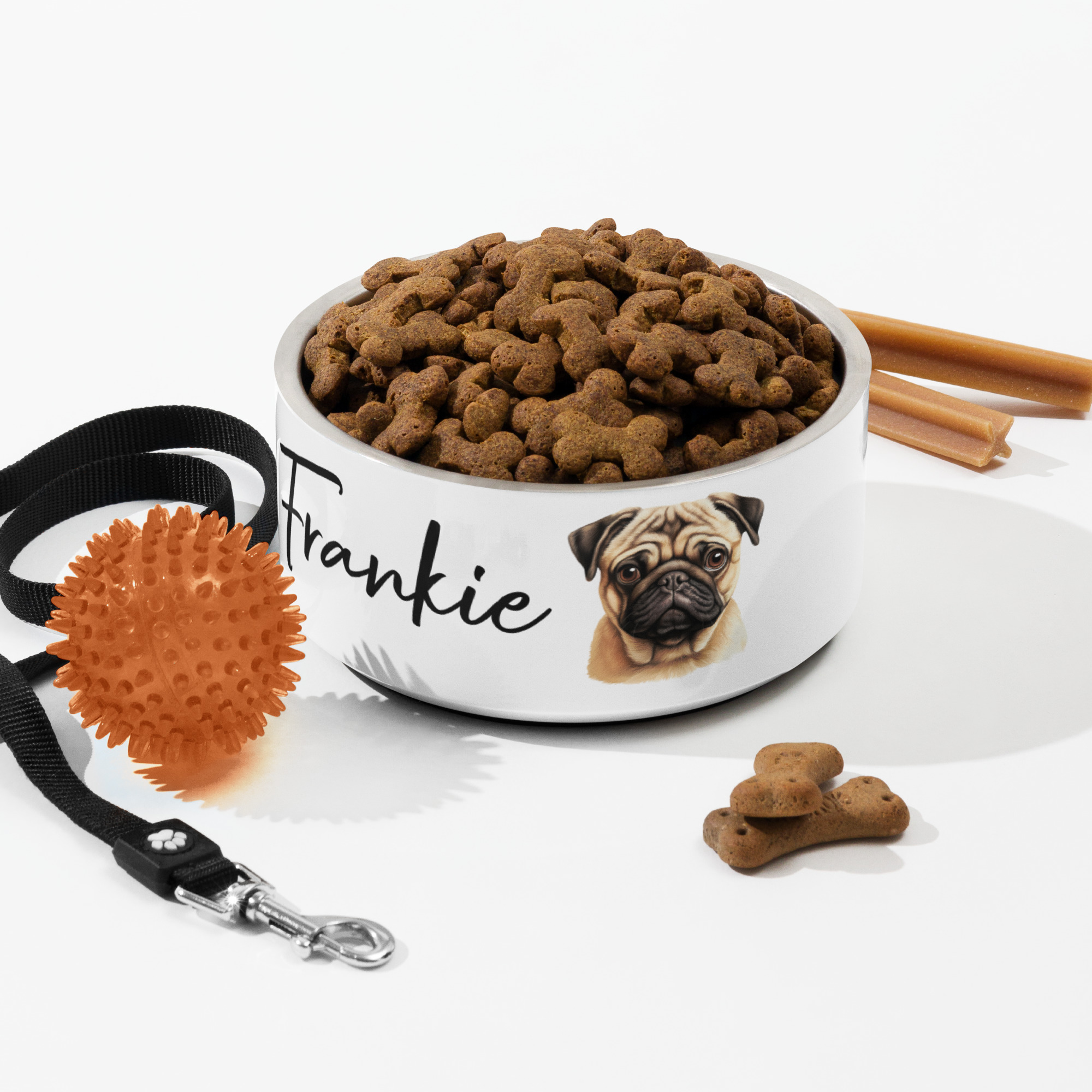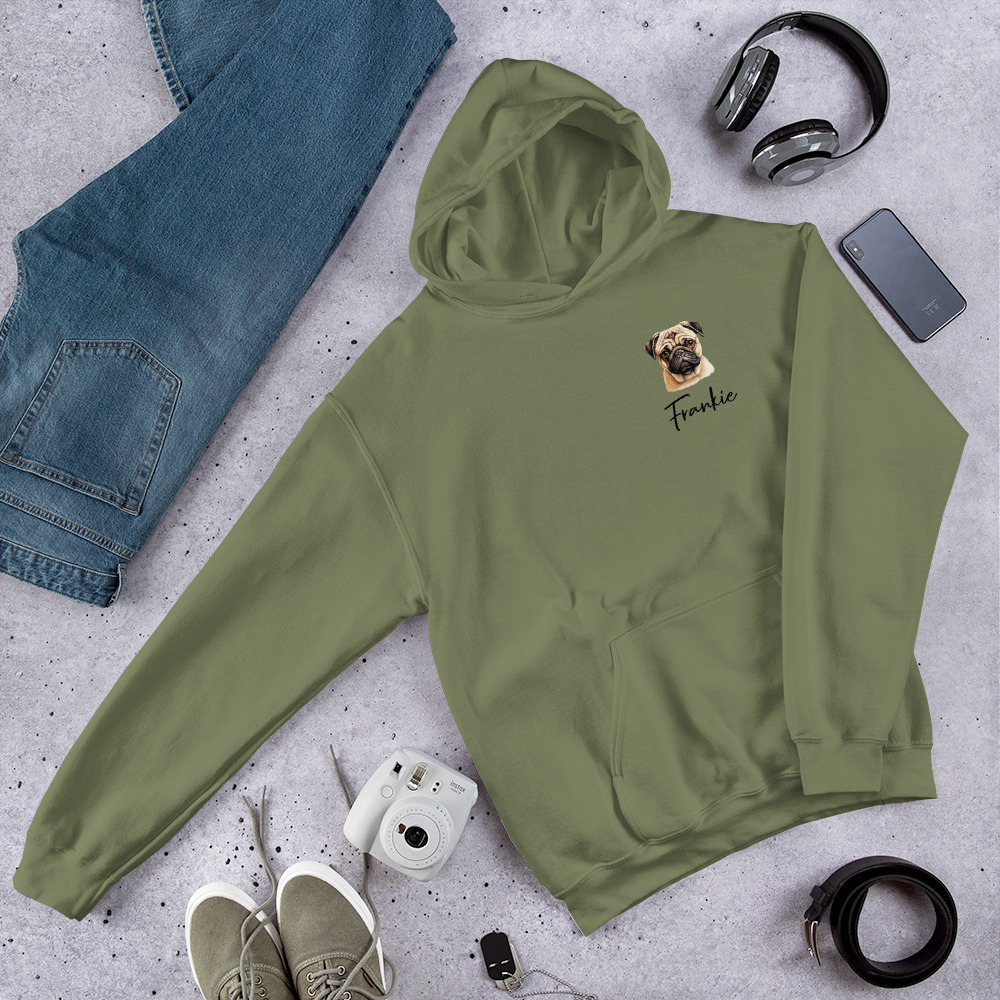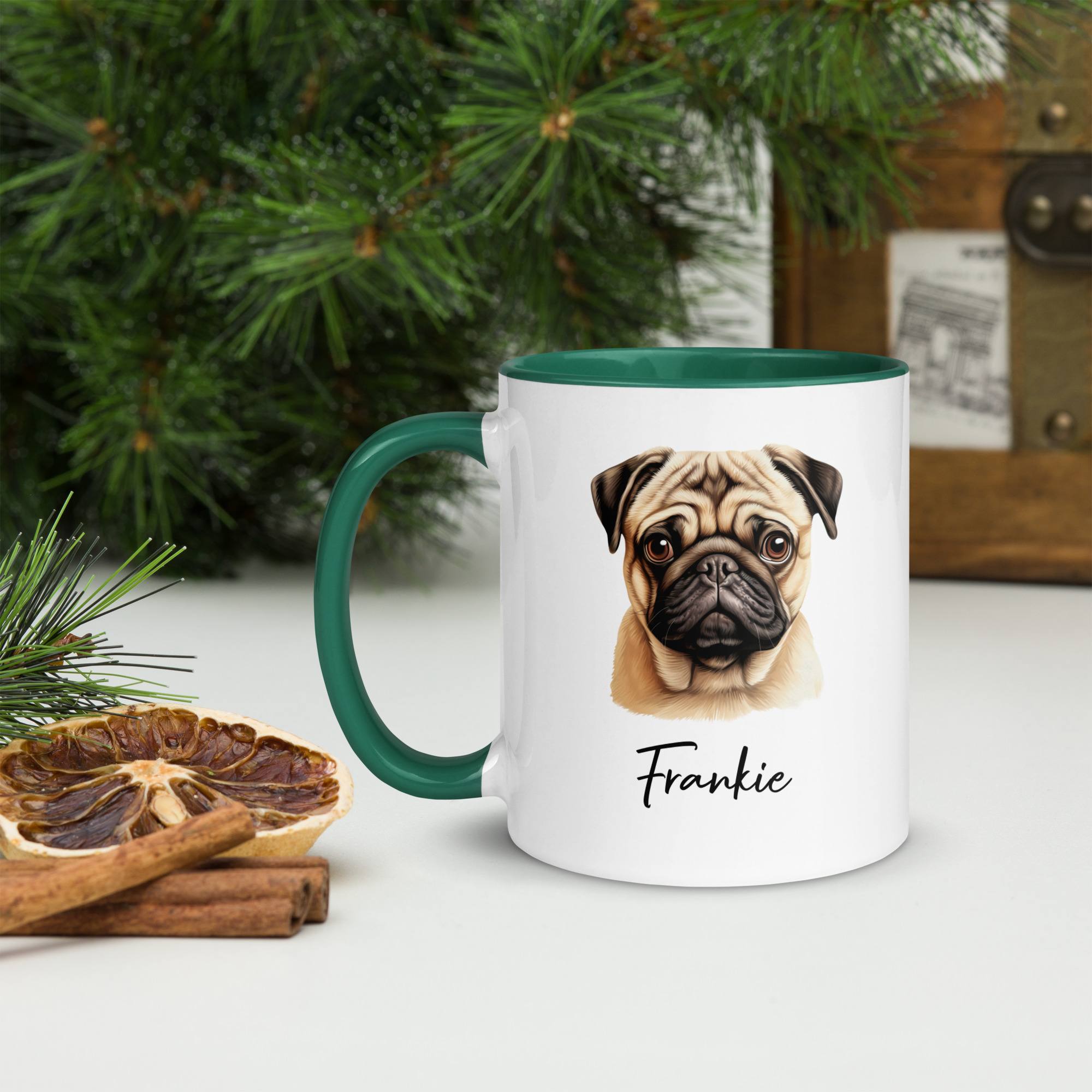Breed Overview
What to Know About: Pug
The Pug is a small yet robust dog known for its distinct wrinkled face, short muzzle, and curly tail. Originally bred as companions for Chinese royalty, Pugs are one of the oldest dog breeds, with a lineage that dates back over 2,000 years. Their charming personalities, expressive faces, and playful nature make them a favorite among dog enthusiasts worldwide.
- Coat: Short and smooth
- Temperament: ugs possess an affectionate, charming, and playful temperament. They often act as “clowns” and form close bonds with both people and other pets.
- Exercise needs: Moderate
- Training: Pugs are intelligent but can also exhibit stubbornness. Patient and positive reinforcement-based training is key.
- Grooming: Moderate
Dog Breed Characteristics
The Charming and Lovable 'Clown' of the Canine World
Weight
14-18 pounds (6-8 kg)
Height
10-14 inches (25-36 cm) tall at the shoulder
Origin
China
Life Span
12 to 15 Years
History and Origin
The Pug’s history traces back to ancient China, around 400 B.C., where they were revered by emperors and aristocrats. Pugs were often kept as lapdogs and guarded by soldiers, a testament to their cherished status. They eventually made their way to Europe in the 16th century, courtesy of Dutch traders, and quickly gained popularity, particularly within the House of Orange in the Netherlands.
In England, Pugs became highly favored by the royal family, especially during the reign of Queen Victoria in the 19th century. Her passion for the breed helped solidify the Pug’s reputation as a beloved companion dog throughout Western Europe. Today, the Pug remains a symbol of affection and loyalty, retaining its status as one of the most cherished small dog breeds.
Physical Characteristics
Pugs are compact, muscular dogs with distinctive facial features that set them apart from other breeds. Their wrinkled foreheads, large, dark eyes, and flat muzzles contribute to their signature “cute” appearance. Pugs are brachycephalic, meaning they have a short skull, which gives them their unique, somewhat comical look.
Size and Weight
- Height: 10 to 13 inches at the shoulder.
- Weight: 14 to 18 pounds.
Coat Colors and Patterns
Pugs have a short, smooth, and glossy coat that comes in several color variations:
- Fawn
- Apricot
- Silver Fawn
- Black
Most Pugs have a distinctive black mask and ears, adding to their characteristic appearance. Their dense coat sheds moderately throughout the year and requires regular brushing to maintain its luster.
Lifespan and Health Considerations
The average lifespan of a Pug ranges from 12 to 15 years. Due to their brachycephalic nature, Pugs are prone to several health issues, particularly respiratory problems. Regular veterinary check-ups and proactive healthcare are essential to ensure a long, healthy life.
Temperament
General Disposition
Pugs are known for their affectionate and friendly demeanor. They thrive on human companionship and form strong bonds with their families. Often referred to as “clowns,” Pugs have an innate ability to entertain with their playful antics and comical expressions. This makes them excellent companions for individuals and families alike.
Personality
Despite their small stature, Pugs have a big personality. They are generally well-behaved but can be stubborn at times. Pugs are eager to please, which makes them responsive to positive reinforcement during training. Their sweet and gentle nature ensures that they get along well with children and other pets.
Temperament & Intelligence
Pugs are intelligent but can display a streak of independence, which may be mistaken for stubbornness. Early training and socialization are key to managing their behavior and ensuring they grow up to be well-mannered dogs.
Behavioral Traits
Pugs are moderate barkers. While they may alert their owners to visitors or unfamiliar noises, they are not typically aggressive or overly protective. They tend to be quiet, calm dogs that enjoy lounging around as much as they enjoy playtime.
Sociability with Children and Other Pets
Pugs are extremely sociable and generally get along well with children and other pets. Their affectionate nature makes them a good fit for families. However, due to their small size and sensitive nature, supervision is recommended when they interact with very young children.
Pug in numbers
Key Characteristics of Pugs in Percentages
Get a quick overview of Pug traits, including their sociability, trainability, grooming needs, health considerations, and more—presented as easy-to-understand percentages.
Things to Know When Owning a Pug
Diet and Nutrition
A balanced diet is crucial for maintaining a Pug’s health. Due to their tendency to gain weight easily, portion control is important. High-quality dog food that meets their nutritional needs, combined with limited treats, helps keep their weight in check. Owners should avoid overfeeding and ensure the Pug’s diet is appropriate for its age and activity level.
Exercise Needs
Pugs require moderate exercise to maintain their health and prevent obesity. Ideally, 20 to 30 minutes of physical activity daily is sufficient. This can include short walks, interactive play sessions, or gentle exercises that do not overexert them. It’s important to avoid excessive exercise, especially in hot or humid weather, due to their sensitivity to extreme temperatures.
Grooming
Despite their short coat, Pugs shed year-round, and regular brushing helps control loose hairs. Particular attention should be given to cleaning their facial wrinkles to prevent infections or irritations. Baths should be given as needed, and their ears and nails should be checked and cleaned regularly.
Training
Basic Training Tips
Training a Pug requires patience and consistency. Positive reinforcement techniques, such as treats and praise, work best. Establishing a routine and focusing on basic commands like “sit,” “stay,” and “come” early on helps set a foundation for good behavior.
Advanced Training
With their intelligence and eagerness to please, Pugs can excel in obedience training and enjoy learning new tricks. Teaching more advanced behaviors like agility exercises or more complex commands can keep them mentally stimulated and reinforce good behavior.
Training for Specific Behaviors
Due to their tendency to be stubborn, training a Pug may take longer than other breeds. Consistency and repetition are key. For behaviors like reducing barking or addressing separation anxiety, professional trainers may be consulted to develop specific training plans.
Health Considerations
Common Health Issues
Pugs are susceptible to several health issues, particularly related to their brachycephalic structure:
- Brachycephalic Obstructive Airway Syndrome (BOAS)
- Hip Dysplasia
- Eye Problems (e.g., corneal ulcers, dry eye)
- Skin Infections (due to their wrinkles)
Regular health checks and preventive care are essential to catch potential health issues early and maintain overall well-being.
Lifespan and Aging
With proper care, Pugs typically live between 12 to 15 years. As they age, they may develop arthritis or other mobility issues. Regular veterinary visits, a healthy diet, and maintaining an appropriate weight can help manage aging-related conditions and ensure a good quality of life.
Living with a Pug
Home Environment
Pugs adapt well to various living situations, including apartments or houses. They enjoy being part of family activities and are content as long as they receive enough attention and exercise. Pugs do not tolerate being left alone for long periods, as they thrive on companionship.
Compatibility with Other Pets
Pugs are generally friendly with other dogs and pets when properly socialized. Their playful nature can sometimes be overwhelming for smaller pets, so supervision is advised during interactions.
Fun Facts
Unique Traits
- The Pug’s motto is “multum in parvo,” which translates to “a lot in a little,” highlighting their big personalities in small bodies.
- Pugs have a long history of association with royalty and aristocracy. They were favorites of Chinese emperors and later gained popularity in the royal courts of Europe.
- Pugs are depicted in several historical artworks and have been companions to many famous figures, including Napoleon’s wife, Josephine Bonaparte.
Popularity in Media and Culture
Pugs have made several appearances in pop culture, featuring in movies, TV shows, and even as beloved internet memes. Their distinctive looks and lovable personalities make them ideal for the spotlight.
Final Thoughts
Pugs are affectionate, playful, and loyal dogs that bring joy to any home. Their unique personalities, coupled with their adorable appearance, make them wonderful companions. With proper care, training, and attention, Pugs can live long, happy lives and remain cherished members of the family.
Shop Pug Gifts: Perfect for Dog Lovers
Discover our selection of print-on-demand gifts tailored for Pug enthusiasts.
Pug Personalized Dog Pillow
23,00 € – 26,00 €Product Details:
• Personalization Available (See Below)
• 100% polyester case and insert
• Fabric weight: 6.49–8.85 oz/yd² (220–300 g/m²)
• Hidden zipper
• Machine-washable case
• Shape-retaining polyester insert included (handwash only)
Personalized Pug Dog Bowl
31,00 € – 35,00 €Product Details:
• Personalization Available (See Below)
• Double-wall stainless steel
• Anti-slip rubber base
• Food grade safe
• Dishwasher safe when the rubber base is removed
Pug Personalized Dog Tag
18,00 €Product Details:
• Personalization Available (See Below)
• Print on both sides
• Material: white coated solid metal
• Size: 1″ round
• Metal clip included
Pug Personalized Christmas Ornament
13,00 €Product Details:
• Personalization Available (See Below)
• 0.125″ (3mm) thick high-quality ceramic
• Glossy finish
• Available in 4 shapes – Snowflake, Star, Heart and Circle
• One-sided print
• Hole and gold-toned hanging string included
• The height of the hole can slightly deviate
• NB! Each pack contains a single ornament
Personalized Pug Breed Hoodie
33,00 € – 37,00 €Product Details:
• Personalization Available (See Below)
• 50% pre-shrunk cotton, 50% polyester
• Fabric weight: 8.0 oz/yd² (271.25 g/m²)
• Air-jet spun yarn with a soft feel and reduced pilling
• Double-lined hood with matching drawcord
• Quarter-turned body to avoid crease down the middle
• 1 × 1 athletic rib-knit cuffs and waistband with spandex
• Front pouch pocket
• Double-needle stitched collar, shoulders, armholes, cuffs, and hem
Pug Personalized Mug
13,00 €Product Details:
• Personalization Available (See Below)
• Ceramic
• 11 oz mug dimensions: 3.79″ (9.6 cm) in height, 3.25″ (8.3 cm) in diameter
• 15 oz mug dimensions: 4.69″ (11.9 cm) in height, 3.35″ (8.5 cm) in diameter
• Colored rim, inside, and handle
• Dishwasher and microwave safe
















